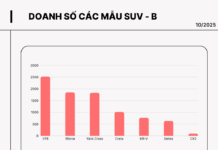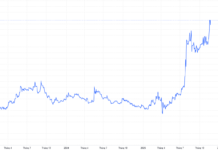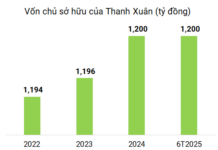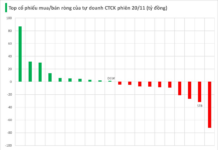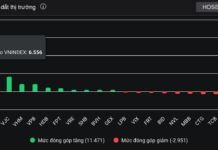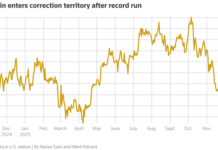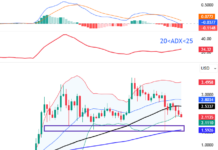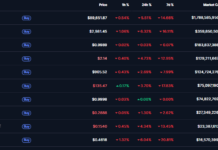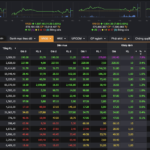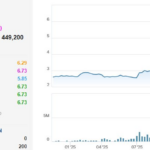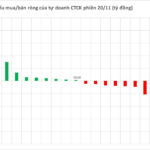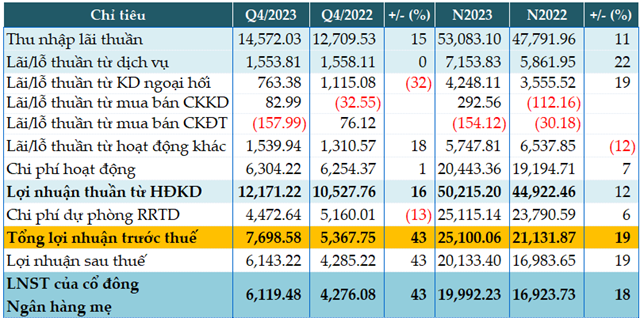The world gold price started the past week at $2,041 per ounce, then dropped to a weekly low of $2,016 per ounce before hovering around this level for most of the week, ending at $2,022.86 per ounce (spot contract), down 0.8% for the week; and $2,038.7 per ounce (February 2024 contract), down 0.4% for the week, under pressure from rising US treasury yields.
In contrast to the global market, domestic gold prices increased slightly last week, from around 76.05 – 78.7 million Vietnamese dong/tael (buying – selling) a week ago to around 76.55 – 78.92 million Vietnamese dong/tael (buying – selling) currently.
The 10-year US treasury yield reached its highest level in two weeks and the 2-year yield reached its highest level in nearly two months, making gold bars less attractive to investors.
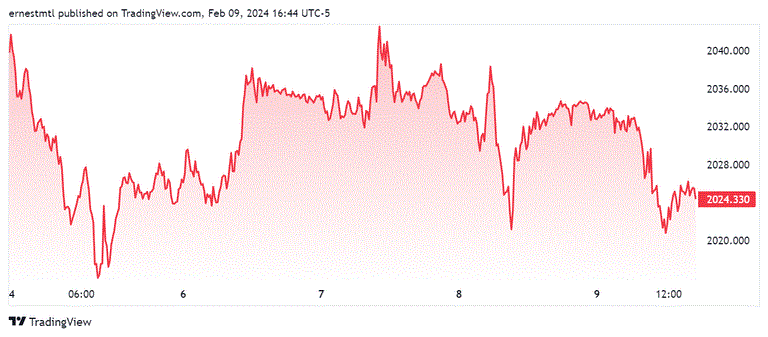
Some Federal Reserve officials, including Chairman Jerome Powell, continue to assert that they want more evidence that inflation will continue to decrease before cutting interest rates. The Fed’s long-standing high interest rates mean that most other central banks could follow suit.
Revised data from the US government on Friday showed that consumer prices in December 2024 increased less than initially estimated. Market participants are now awaiting the release of the US Consumer Price Index (CPI) for January, which is expected to be released on Tuesday (February 13th). According to CME Fedwatch, traders currently predict about a 61% chance of the Fed cutting interest rates in May.
The latest survey by Kitco News shows that both Wall Street analysts and retail investors on Main Street mostly agree that there is little chance of a strong sell-off in the coming days, and as such, prices are expected to remain relatively stable next week.
Bob Haberkorn, Senior Commodity Broker at RJO Futures, said that gold prices fell last week due to the market’s reaction to data from China (consumer prices in January experienced the biggest decline since the global financial crisis) while betting on forthcoming US data.
Haberkorn also noted that rising stock prices are also hampering the gold market. He said, “The US stock market is currently hot and gold is being hindered on the road to recovery.” “The S&P 500 index has surpassed 5000 points and the NASDAQ is reaching new highs, so gold will lose some attractiveness.” He said that the current price range is stuck between $2,000 and $2,075. “Technically, we need the price to break above $2,075 to signal any breakthrough, which may occur next week along with the scheduled data release.” “At the moment, I maintain a neutral stance and believe that price movement is and will continue to depend on data.” He stressed that the short-term direction of gold will depend on inflation data. As for geopolitical issues, he said:
“There really isn’t any new geopolitical news. I know that the situation in the Red Sea is deteriorating, the situation in Israel is still ongoing, as it is in Ukraine. But I think if it takes a catalyst to push gold higher, it will be a direct attack on Iran or something with the Iranian Revolutionary Guard Force.”
In the latest survey by Kitco News, 12 Wall Street analysts and most of them eliminated the possibility of a decline in gold prices in the near future, although prices have dropped in the past week. Among them, 4 experts, equivalent to 42%, predict that prices will rise next week (February 12th – 16th), while only 1 analyst (8%) predicts a decline in prices; 6 experts, accounting for half of those surveyed, predict that gold prices will remain flat next week.
Meanwhile, 165 online surveys have attracted the attention of retail investors on Main Street, with those maintaining an optimistic attitude having the highest percentage. 77 retail investors, accounting for 47%, expect gold to rise next week; another 37 people, equivalent to 22%, predict a decline in prices; while the remaining 51 people, equivalent to 31%, have a neutral view on the short-term prospects of this precious metal.
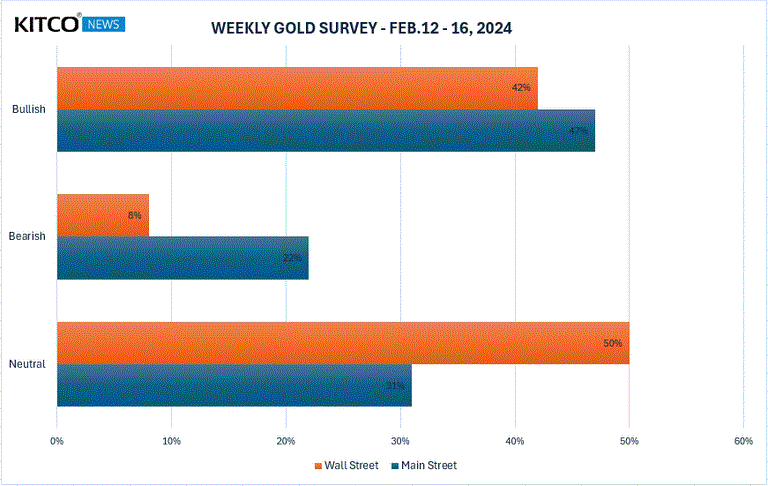
Next week, inflation data in the US once again will be the center of attention, with the release of the CPI report for January on Tuesday morning (February 13th), updated PPI data for December on Wednesday (February 14th), and preliminary PPI data for January on Friday (February 16th).
The market will also pay attention to US weekly jobless claims and retail sales for January, as well as the Fed Philly and New York manufacturing indices, all of which will be published on Thursday morning (February 15th), followed by building permits and housing starts for January. In addition, there will be speeches by various presenters throughout the week.
Reference: Kitco News

